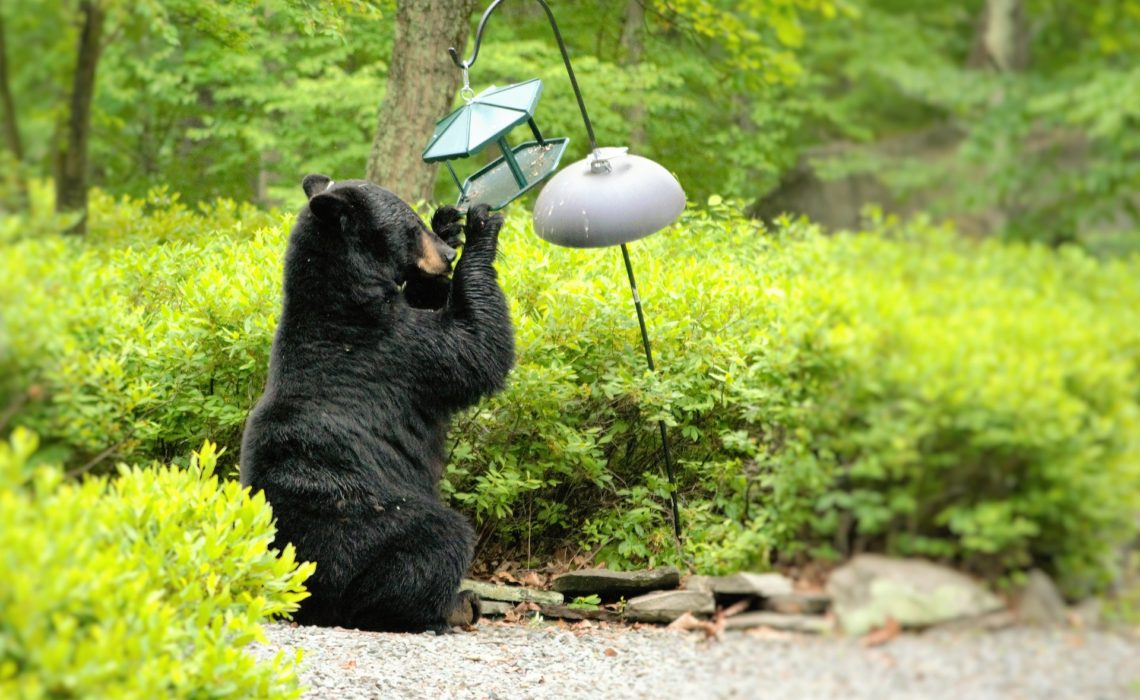
Who doesn’t love a bear? Bears are cute. We all grew up with Yogi Bear, Smokey Bear and even Teddy Bears.
One of the most endearing moments of my Park Ranger career involved bears. Walking to the visitor center one early morning, I caught sight of a baby bear clutching a tree branch as it waited for its mom. Definitely one of those “awww” moments.
We’re so enamored with bears that we try to make wild ones into our pets.
So begins the story of the black bear and maple donuts I heard on Public Radio this morning.
Like Colorado, New Hampshire is home to numerous black bears. Years ago, an elderly man living in Hanover started feeding a female black bear. The chosen food for her? Maple donuts.
As you can imagine, the bear really enjoyed that meal compared to her normal food of grubs, grasses, and acorns. She kept coming back for more.
By the time the man died, the bear had become so habituated, she kept coming into town looking for hand outs. The residents of the town thought she was cute and sweet, words normally used for your pet dog, not a wild animal. They named her Mink.
And they kept feeding her. But not everyone was enamored with her “tame” ways. Eventually, wildlife officials stepped in and relocated her over the border to Canada.
She’s baaaack! People are surprised by the hundreds of miles she has traveled to get back to Hanover.
I’m not.
Bears are mammals. Like all mammals, they have a home territory where they continually retreat back to. Add to her natural instinct, the fact she’s been so conditioned by human food, and it not only understandable, but predictable.
So why do wildlife officials pursue this strategy?
It’s an easy fix. One that doesn’t require people changing, and it doesn’t have a tragic ending. So much nicer to tell little kids Mrs. Bear moved to a new home somewhere. So much sadder to have to tell Johnny and Ashley that the bear was killed because of mistakes made by people.
As a park ranger, I’ve seen this story play out too many times. In fact, it’s so frequent, that the Park Service gave up relocating bears long ago, because it just doesn’t work.
While working in Sequoia National Park as a Park Ranger, we had a mother bear with three cubs breaking into cars. If you’ve never seen this, it’s quite a testament to the bear’s strength and intelligence. She bends the window frame back like she’s peeling the top off a sardine can. Tears apart the car looking for food, smashes the window and goes out the other side.
Their normal protocol was to put the bear down, but with three small cubs, they worried about the PR. So they moved her and the three cubs more than 100 miles, with 13,000-foot peaks in between, far away from people and development.
Weeks later, the bear had made her way south out of the park to Lake Isabelle, a resort community, where she resume her break-ins. Shortly after, she was put down.
There is a lesson to these stories. Black bears are wild animals. They are not pets. We shouldn’t give them names, nor should we feed them human food. Any human food. When we feed them, we insure their untimely demise.
While my neighbors in Nederland don’t typically feed bears donuts, they do feed them. I can’t tell you how many people have bird feeders, especially hummingbird feeders filled with sugar water. “Yum, yum” thinks the bear. Don’t fool yourself, you’re feeding that bear, just like you’d given her a donut.
Others insist on leaving their trash outside, another lure for bears and other wildlife.
As a Park Ranger, I’ve seen a bear get put down. To see that magnificent animal stilled, its life cut short is one of the saddest things I’ve witnessed. I want no part in contributing to that even if it means I give up feeding the birds, or have to keep my trash inside.
The bear’s survival depends on it.

